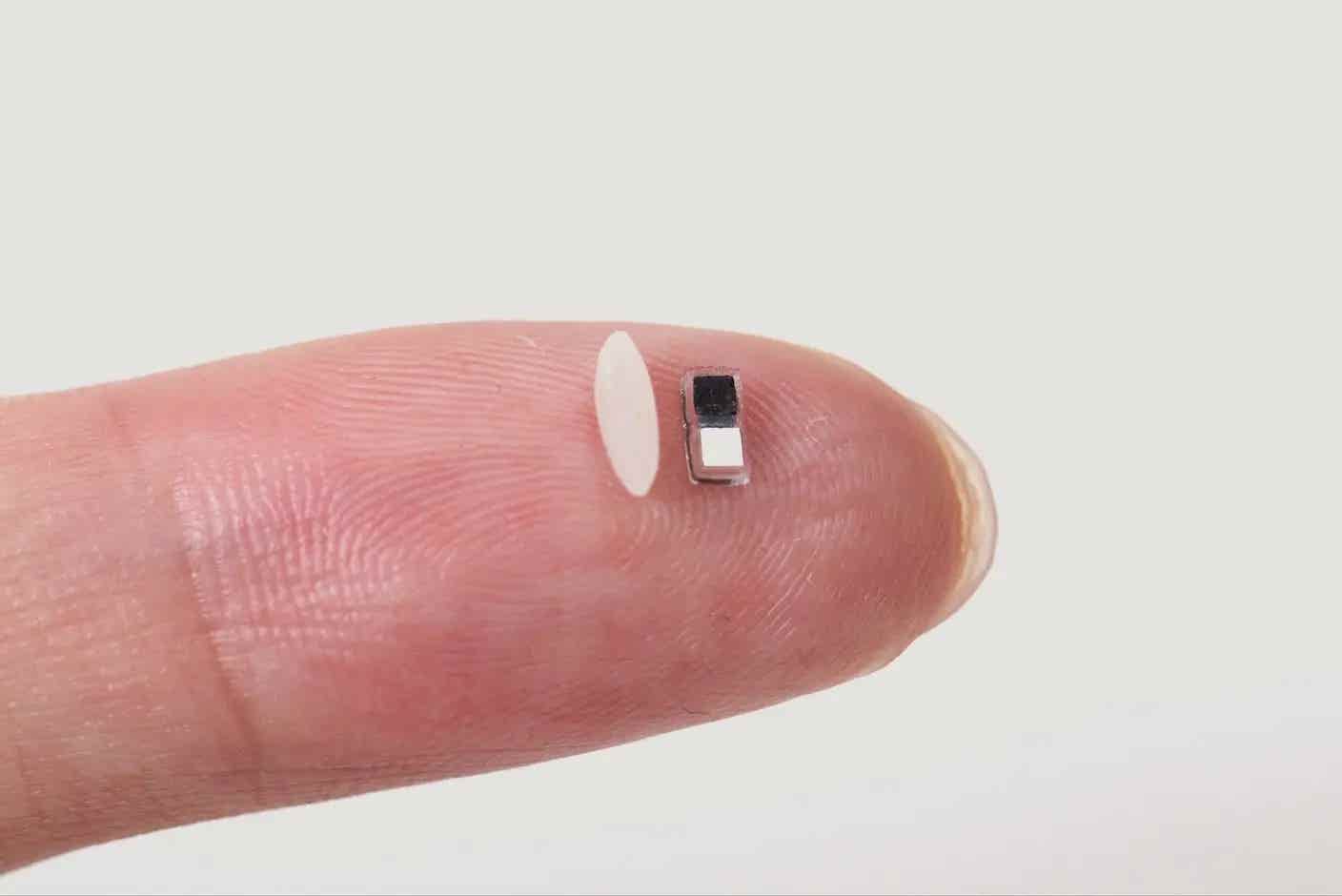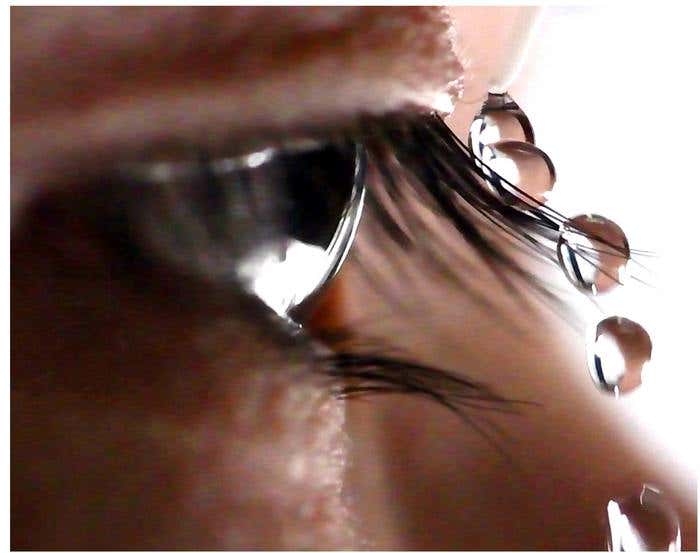The world’s smallest pacemaker safely dissolves in the body after use
A rice-sized pacemaker dissolves after stabilizing heart rhythms, offering a wire-free, surgery-free solution for fragile hearts.

Tiny light-controlled pacemaker dissolves after use, offering safer heart care without wires or surgery. (CREDIT: John A. Rogers / Northwestern University)
The heart may be small, but its rhythm powers life. When something throws that rhythm off—especially after surgery—it can become a race against time to restore balance. For decades, doctors have relied on temporary pacemakers to stabilize the heart during critical recovery periods.
These life-saving devices, however, often come with a tradeoff: invasive surgery, risky complications, and the physical burden of wires and bulky hardware. But a new technology is changing that reality—and it might just be smaller than a grain of rice.
A Game-Changer for Fragile Hearts
Engineers from Northwestern University have now developed a tiny pacemaker so small it fits inside the tip of a syringe. Designed to be injected directly into the body, it requires no wires, no external batteries, and no follow-up surgery to remove it. Once the heart no longer needs pacing support, the device naturally dissolves into the body’s fluids.
This technology is particularly well-suited for babies born with congenital heart defects. About 1% of children around the world are born with these conditions. After heart surgery, they often need pacing for just a few days. “Those seven days are absolutely critical,” explained one of the lead researchers. “Now, we can place this tiny pacemaker on a child’s heart and stimulate it with a soft, gentle, wearable device.”
The system consists of two parts. The implant itself, measuring just 1.8 millimeters wide, 3.5 millimeters long, and 1 millimeter thick, rests on the surface of the heart. A wireless wearable device—like a small patch—sits on the chest and constantly monitors the heart’s activity. When it detects an abnormal rhythm, it automatically shines infrared light through the skin to activate the pacemaker. These light pulses guide the heart’s rhythm without the need for invasive wires or external control boxes.
A Light-Controlled, Self-Powered Revolution
Traditional temporary pacemakers involve a tangle of wires that exit the body through the chest, connecting to an external power source. These wires are sewn onto the heart and must be pulled out after the device is no longer needed. That removal process can tear tissue, cause bleeding, and in some cases, be fatal. “That’s actually how Neil Armstrong died,” said another researcher. “When the wires were removed, he experienced internal bleeding.”
Related Stories
The new device avoids these dangers by being completely self-contained and wireless. At its core is a battery made of two different metals. When the device is exposed to biofluids, those fluids serve as the electrolyte, completing the circuit and allowing electrical stimulation.
A light-sensitive switch flips the device on when it receives infrared light from the wearable patch, which controls both the timing and strength of each pulse.
“We had to eliminate the bulky antenna used in earlier designs,” said one of the engineers. “By switching from radio frequency to light-based control, we could shrink the device dramatically.”
The result is a self-powered, light-controlled, fully bioresorbable pacemaker. Despite its small size, it can deliver the same level of stimulation as a standard full-size device. It’s been successfully tested in rat, pig, dog, and human hearts, showing consistent performance in both single and multi-chamber pacing.
Synchronizing the Beat
Because these pacemakers are so small, doctors can place multiple units across different parts of the heart. Each one responds to a different color or wavelength of light. This means various areas of the heart can be paced in perfect sync or even independently. That level of control allows physicians to fine-tune heart rhythms in ways traditional devices cannot.
In tests with hound dogs—whose hearts closely resemble those of humans—researchers implanted several pacemakers and controlled them individually. Using light pulses, they changed the contraction of two heart chambers to match a natural beat. “You can pace the heart in very sophisticated ways,” said one researcher. “This offers more control than a single pacemaker ever could.”
These tiny pacemakers can also be embedded into other implantable devices like valve replacements. Heart valve surgeries often cause atrioventricular blocks, where signals from one part of the heart don’t reach another. These embedded pacemakers can kick in automatically to restore communication between chambers, reducing the need for further surgeries.
A Dissolving Solution to a Lasting Problem
Perhaps the most remarkable part of this pacemaker is that it simply disappears. Made of biocompatible materials, the device dissolves within nine to twelve months. No extra procedure is needed. The materials are already used in daily dietary supplements and are harmless to the body.
This isn't the first dissolvable pacemaker from the team. Back in 2021, they introduced a larger, quarter-sized model powered by near-field communication—the same tech used in tap-to-pay systems. But the built-in antenna made it too big for use in tiny bodies or for injection-based delivery.
The newest version ditches radio signals for light. With that shift, researchers were able to miniaturize the device by over 23 times compared to earlier bioresorbable models. It’s also 2.5 times smaller than any previously reported pacemaker, period.
Expanding Beyond the Heart
While the device was designed for temporary cardiac pacing, its potential goes far beyond the heart. Its light-based control and dissolvable design make it adaptable for many types of electrotherapy. Researchers believe the same technology could help regenerate damaged nerves or bones, treat chronic wounds, and even manage pain without drugs.
“You could sprinkle them around,” said one researcher. “Do a dozen of these things… each one controlled by a different wavelength of light.”
This approach, called wavelength-division multiplexing, enables multiple devices to operate independently yet in harmony. It opens doors to new kinds of personalized medicine where different body parts receive targeted electrical stimulation—all without wires or bulky machines.
Meeting the Moment in Modern Medicine
The heart is not just a pump. It’s a finely tuned machine that depends on precise electrical signals. When those signals fail, pacing is essential. For many patients, especially the very young and very old, traditional pacemakers come with too many risks.
This new device offers a safer, smarter alternative. It’s light-controlled, body-powered, and disappears when it’s no longer needed. That’s a big step forward in the world of bioelectronics.
“This is what surgeons asked for,” said one researcher. “A fully implantable, wirelessly controlled temporary pacemaker that would just melt away inside the body after it’s no longer needed.”
And now, thanks to this breakthrough, that wish has become reality.
Research findings from this study can be found in the journal Nature.
Note: The article above provided above by The Brighter Side of News.
Like these kind of feel good stories? Get The Brighter Side of News' newsletter.
Joseph Shavit
Head Science News Writer | Communicating Innovation & Discovery
Based in Los Angeles, Joseph Shavit is an accomplished science journalist, head science news writer and co-founder at The Brighter Side of News, where he translates cutting-edge discoveries into compelling stories for a broad audience. With a strong background spanning science, business, product management, media leadership, and entrepreneurship, Joseph brings a unique perspective to science communication. His expertise allows him to uncover the intersection of technological advancements and market potential, shedding light on how groundbreaking research evolves into transformative products and industries.



